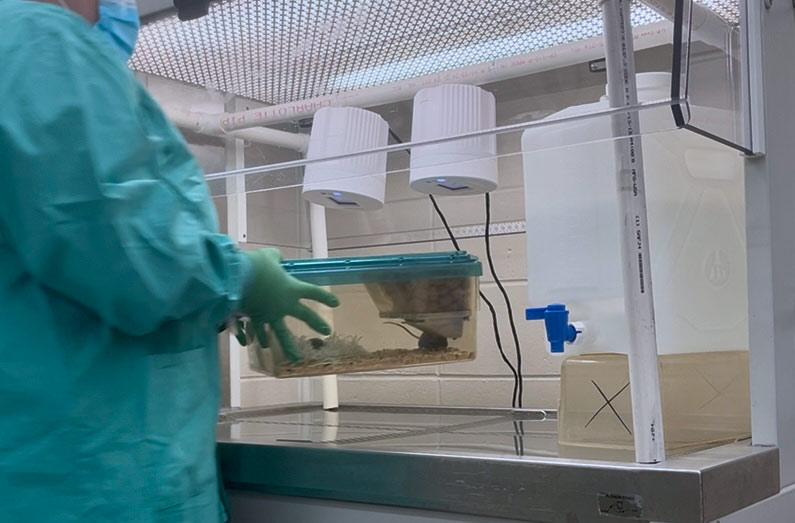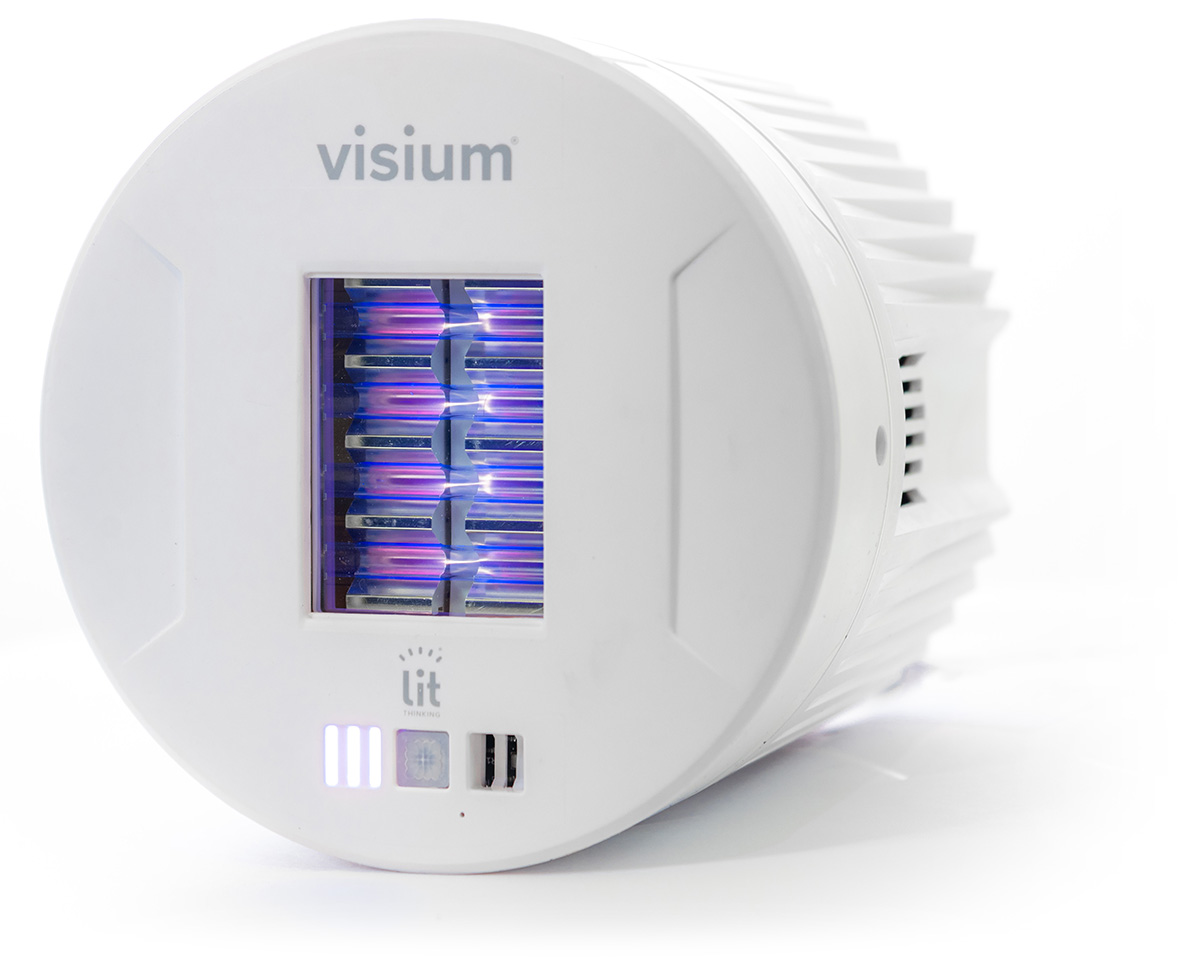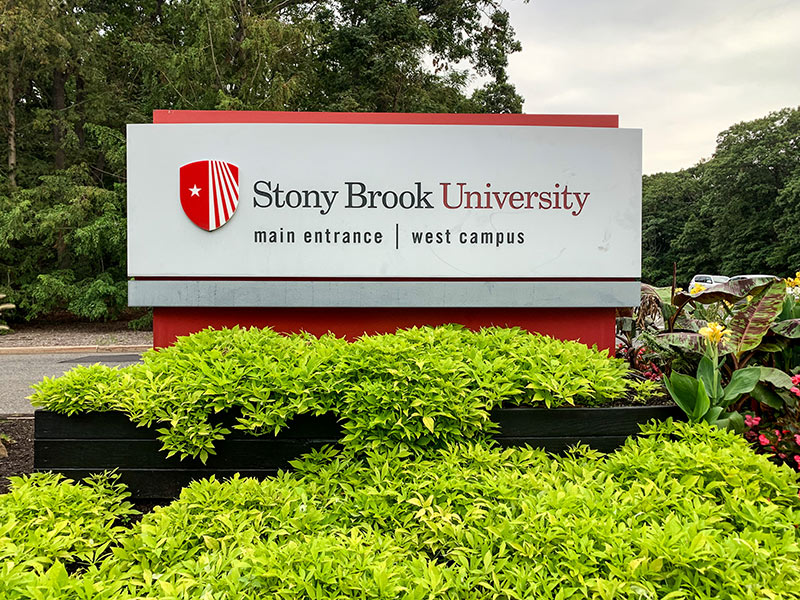

CASE STUDY
Fighting Biological Contamination and Safeguarding Labs and Animals
Implementing Visium Far-UVC fixtures reduces microbial load
and pathogen risk in veterinary research labs.
OVERVIEW
Stony Brook University, on Long Island in New York, is a leading national research institution with a strong focus on advancing biotechnology. Within its animal research facilities, staff face ongoing risks of infection and contamination from fomites and bioaerosols.
Protecting research animals, which are often expensive and irreplaceable models, was essential to preserving the integrity of ongoing studies. Even a single outbreak could be both costly and catastrophic for research outcomes.
THE CHALLENGE
Traditional terminal cleaning methods and existing ventilation systems leave gaps in sanitation. Germs and genetic material can accumulate on high-touch surfaces and continue to circulate in the air. In lab environments, contamination often stems from bioaerosols generated by animals and exposure to the surrounding environment.

OUR SOLUTION: Visium Far-UVC
Two Visium devices were installed inside an animal cage-change station laminar flow hood, used regularly for colony maintenance and handling of research animals. The fixtures continuously inactivate bioaerosols and surface bioburden in this 10 sq. ft. workspace. Devices were mounted above the hood’s working surface to provide optimal coverage without interfering with staff workflows or animal welfare.
The addition of Far-UVC for continuous air and surface treatment helps inactivate pathogens in real time. This reduces the risk of cross-contamination between test subjects and staff and strengthens overall research biosecurity.


“This novel technology holds great promise for our vivaria, healthier animals, more reliable science, and faster discovery at Stony Brook.”
.
Rachel Brownlee
Director of the Division of
Laboratory Animal Resources
Stony Brook University
KEY TAKEAWAYS
Seamless integration
Visium fixtures became part of Stony Brook’s cage-change station and hygiene protocols without disruption.
Added biosecurity
Continuous Far-UVC reduces risks of airborne and surface contamination.
Sustainable sanitation
Passive, continuous performance keeps workspaces cleaner between manual cleaning cycles.
Uninterrupted operations
Research and animal care proceed without interference.
Safe and efficient
Animals and staff are unaffected by Visium, and each fixture operates at just pennies per day in energy costs.
CONCLUSION
Stony Brook University is committed to adopting eco-friendly, innovative solutions to protect its research and animals. With Visium Far-UVC, the lab achieved and exceed their goal to lower infection risks and improve sanitation without interrupting daily operations or adding significant costs.
The installation provides a reliable safeguard against bioaerosols and pathogens, strengthening both research continuity and animal welfare.
“In research environments where the health of both animals and personnel directly impacts outcomes, preventing biological disruptions is critical,” said Dr. Janet Price, Visium’s Chief Science Officer. “Even a single outbreak can compromise data integrity, halt progress, and delay lifesaving discoveries. Visium plays a vital role in minimizing these risks—helping safeguard research continuity when it matters most.”
